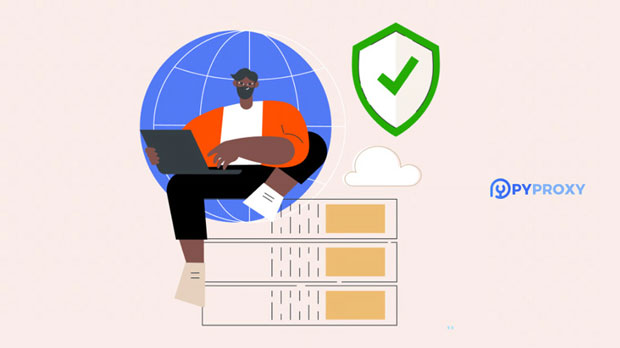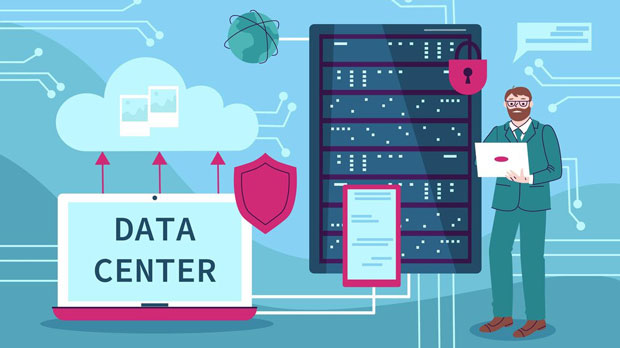PYPROXY stands at the forefront of providing cross-platform compatibility across browsers, scripts, and APIs, empowering developers and businesses to harness the full potential of automation and connectivity. As the digital landscape continues to evolve, ensuring smooth interaction between different environments becomes crucial for enhancing workflow efficiency. PyProxy's unique capabilities bridge the gap between various technologies, enabling seamless communication between platforms that traditionally struggle to coexist. This article will explore PyProxy's features in depth, focusing on its ability to adapt to browser, script, and API environments, as well as its practical applications in real-world scenarios. Understanding Cross-Platform Compatibility: The Need for FlexibilityIn today’s rapidly changing tech ecosystem, the ability to connect multiple systems across different platforms is essential for developers aiming to build integrated solutions. Cross-platform compatibility means that applications or tools can run seamlessly across a variety of operating systems, devices, and environments without significant alterations. This is particularly valuable when working with diverse technologies, where platforms like web browsers, scripting languages, and APIs often have different protocols and constraints. PyProxy addresses this challenge head-on by providing a robust framework that allows for interoperability, ensuring that users can leverage the strengths of each environment without worrying about compatibility issues. The tool's adaptability ensures smooth integration and communication, whether in browser-based applications, scripts, or through API calls.PyProxy’s Adaptation to Browsers: Unifying Web InteractionsWeb browsers are one of the most common interfaces through which users interact with the digital world. However, the wide variety of browser environments—each with its own set of standards, protocols, and security measures—often complicates the process of developing seamless cross-browser applications.PyProxy addresses this challenge by offering comprehensive support for different browsers. Whether users are interacting with Chrome, Firefox, Safari, or Edge, PyProxy ensures that the communication and functionality are consistent across all these platforms. Its ability to automatically detect and adjust to various browser environments reduces the need for developers to write browser-specific code. By adapting the underlying functionality, PyProxy eliminates the usual pain points of browser compatibility, offering a more efficient development process and enhancing the user experience.Additionally, PyProxy enhances web scraping, testing, and automation processes. When used in browser automation scripts, it ensures that data extraction or interaction workflows are executed flawlessly, regardless of the browser in use.Script Compatibility: Scripting for All PlatformsScripting languages play a crucial role in automating tasks and enhancing workflows, especially in environments where users need quick and efficient interactions with various systems. However, different platforms support different scripting languages, and these scripts often need adjustments depending on the underlying environment. PyProxy simplifies this process by offering support for various popular scripting languages like Python, JavaScript, and Ruby.PyProxy allows scripts to run across different platforms without needing manual modifications, making it ideal for developers looking to execute automated workflows in heterogeneous environments. For instance, a Python script designed to interact with a web browser or API can run seamlessly across Windows, Linux, or macOS. The tool's cross-platform compatibility ensures that scripts maintain their intended functionality, regardless of the platform in use.This universal script support ensures that developers can focus more on the logic of their scripts rather than spending time troubleshooting platform-specific issues. Whether users are leveraging the power of Python for machine learning or using JavaScript to manipulate web content, PyProxy ensures that the scripts are executed smoothly, with minimal overhead.API Integration: Simplifying Cross-Platform ConnectivityAPIs are a fundamental part of modern software development, allowing different applications to communicate with each other. However, many challenges arise when APIs are designed to interact with multiple platforms that have varying configurations. Ensuring API calls function correctly across diverse environments requires handling different authentication methods, data formats, and protocols.PyProxy excels in simplifying the process of cross-platform API integration by offering flexible adaptation capabilities. Whether an API is designed for RESTful communication, SOAP, or GraphQL, PyProxy can streamline the process of making cross-platform API calls, ensuring that data flows seamlessly between different platforms.One of PyProxy’s strengths in API integration is its ability to standardize communication protocols. It can convert requests and responses between different formats, ensuring compatibility between diverse systems. This means that even when two systems are built on different technologies, they can exchange data effortlessly. Developers can rely on PyProxy to handle the nuances of API requests and responses, freeing them from the complexities of platform-specific API compatibility.Moreover, PyProxy’s adaptability extends to cloud-based platforms, providing a bridge between on-premise solutions and cloud services, which is vital for businesses leveraging hybrid infrastructures. This ability to support APIs across different network environments allows businesses to innovate faster, with less friction during development.Real-World Applications and Benefits of PyProxy's Cross-Platform CompatibilityThe practical implications of PyProxy's cross-platform capabilities are far-reaching, benefiting developers, businesses, and end-users alike. In real-world applications, PyProxy can be used to automate tasks such as web scraping, data extraction, and monitoring across different platforms. By streamlining the integration of various technologies, it helps businesses save time, reduce development costs, and increase overall productivity.For example, a company with a complex web-based application may use PyProxy to ensure its tools and services work consistently across different browser environments. In addition, businesses leveraging APIs from multiple vendors can rely on PyProxy to ensure seamless communication between their internal systems and third-party services, improving the speed and efficiency of their operations.Furthermore, the compatibility features offered by PyProxy are particularly beneficial in industries such as e-commerce, fintech, and healthtech, where multiple platforms are often integrated to offer a unified user experience. By bridging gaps between disparate technologies, PyProxy helps ensure that users can access services with minimal delays, errors, or compatibility issues.Conclusion: The Value of PyProxy in a Multiplatform WorldIn a world where systems and platforms are constantly evolving, ensuring seamless communication between different environments is more important than ever. PyProxy’s cross-platform compatibility for browsers, scripts, and APIs is a game-changer for developers and businesses aiming to optimize workflows and enhance user experiences. Its ability to adapt to various environments not only simplifies the development process but also opens up new possibilities for automation, integration, and innovation.By embracing PyProxy, businesses can future-proof their systems, ensuring that their applications and services remain compatible with the ever-changing technological landscape. Whether it's enhancing browser functionality, automating scripts, or streamlining API communication, PyProxy offers a robust solution that meets the needs of modern developers and businesses striving for efficiency and scalability.
Nov 13, 2025



































































